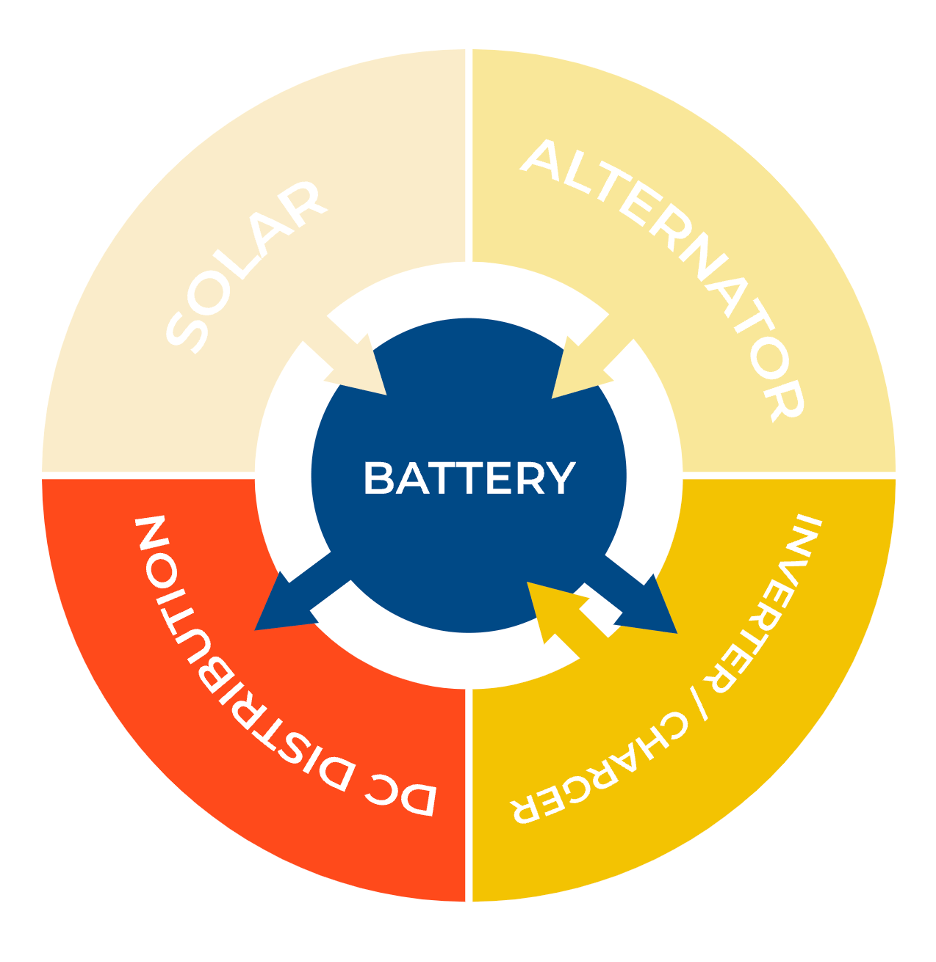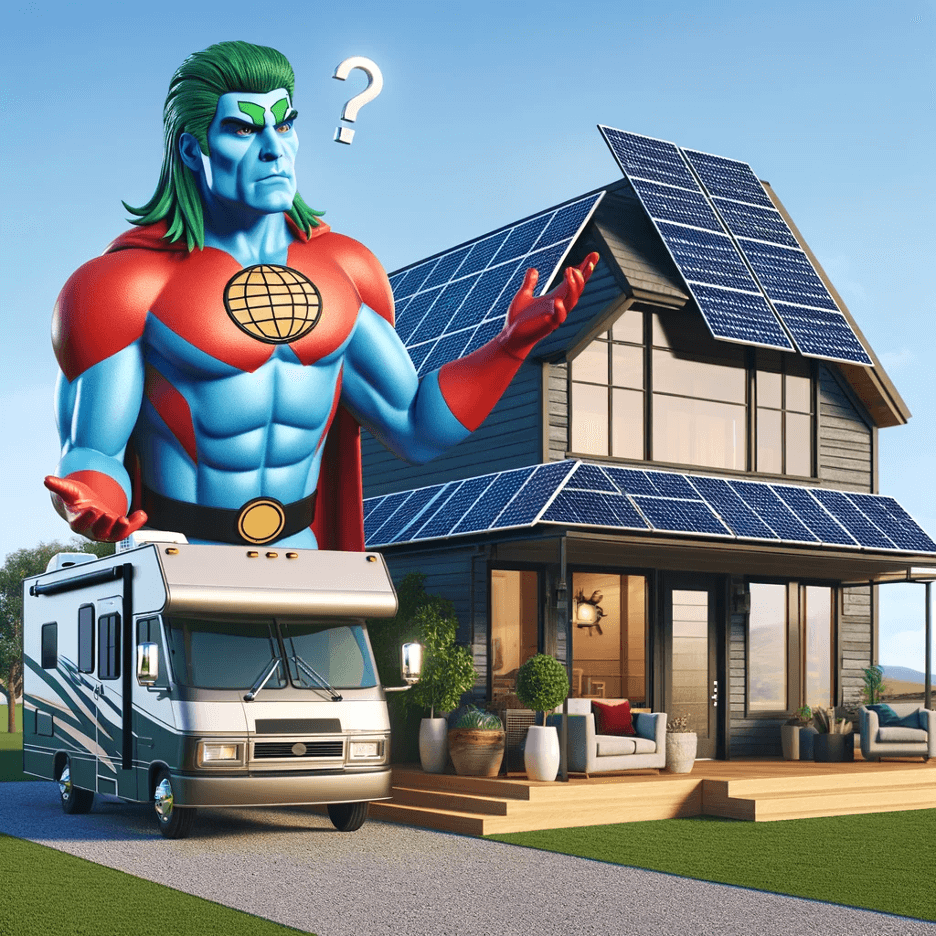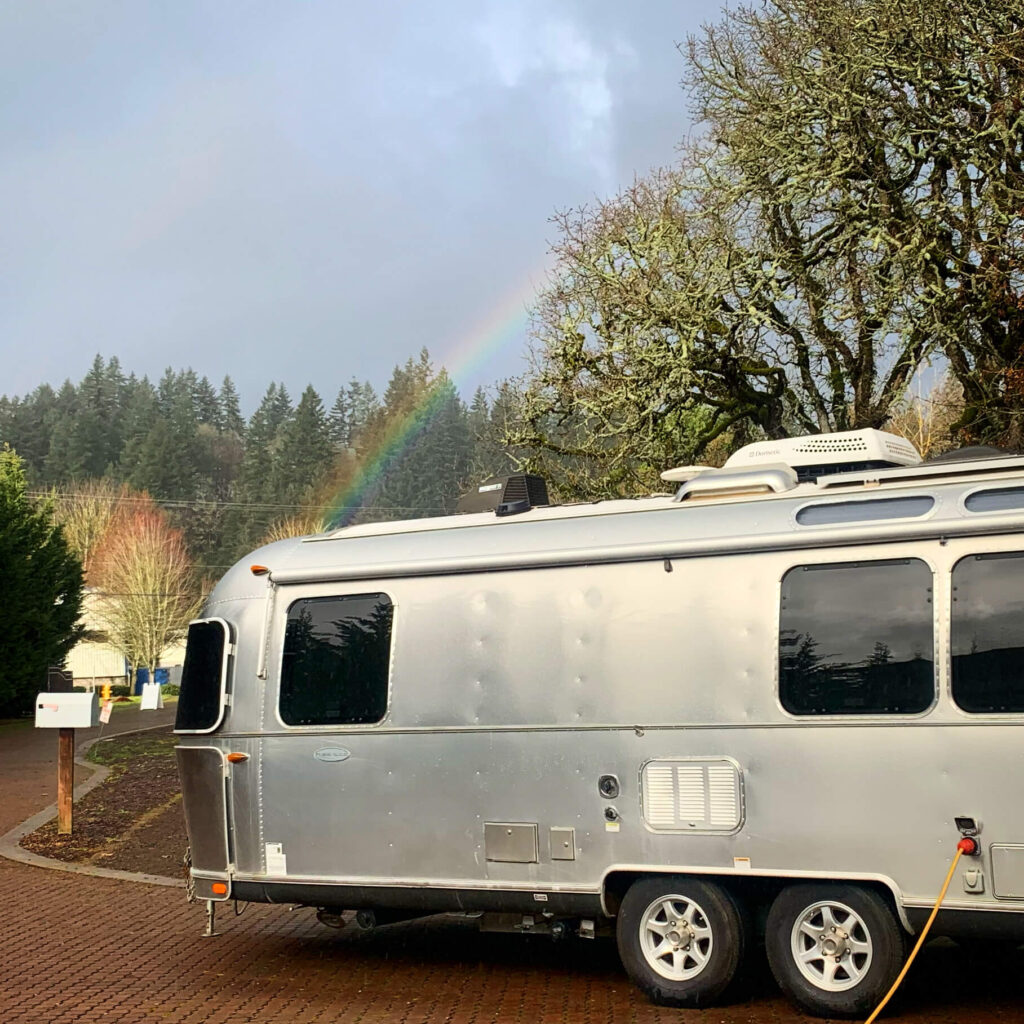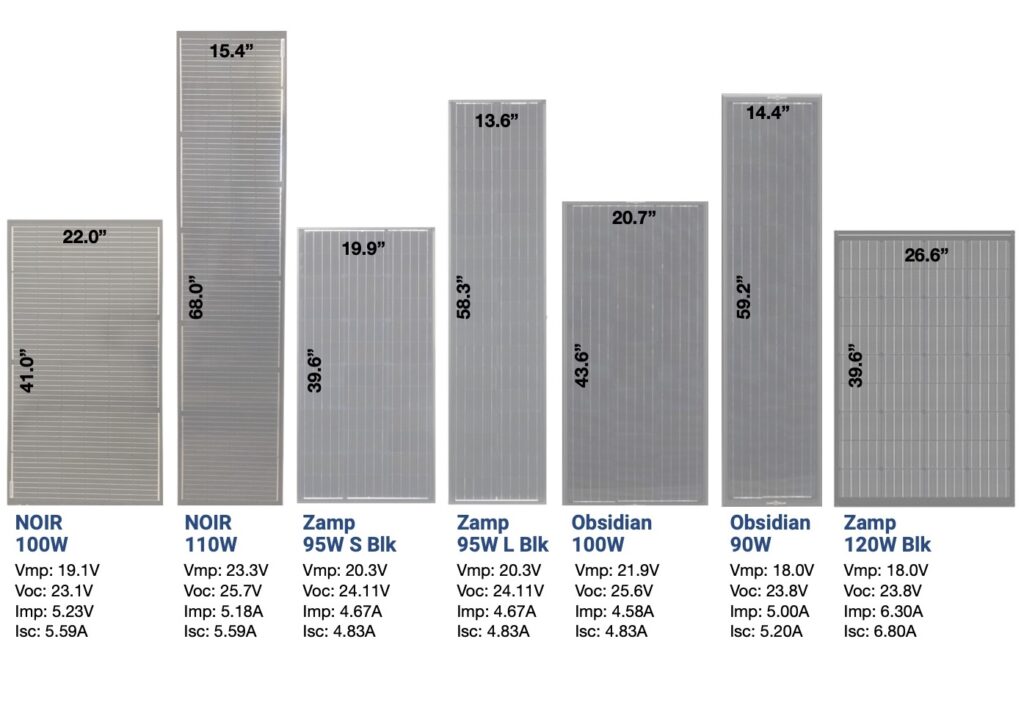Maybe you have solar panels on your house and you love how they are reducing your bill. Or, maybe you have recently been annoyed by someone knocking on your door trying to sell you solar for your house, but you think it’s a scam because of something you saw on YouTube. Either way, this article isn’t going to touch that conversation, but rather point out the differences between residential grid-tied solar and mobile off-grid solar. From the motivations for the purchase, to the equipment, to what the systems accomplish, they are very different.
Clean and Green Motivations
For some people, a motivating factor in the decision to purchase residential solar is because they feel like it reduces the dependency on energy sources that are more harmful to the environment. In contrast, aside from the reduction in noise pollution from a generator, it might be hard to find an RVer (who drives around the country in a gas-powered vehicle) whose primary motivation for buying solar panels was environmental.
For example, the space station doesn’t have solar panels on it because the engineers wanted to reduce its carbon footprint. It has solar panels on it because solar panels produce electrical power, and it would be impractical to run a gas generator. The same can be said for many RVers. Solar panels work, they produce electrical power, and running a gas generator isn’t always practical.
Return on Investment
Unless you can assign a specific dollar amount to things like:
-The freedom to camp without a power connection
-Reduced, or no, generator runtime and associated noise
-Better maintenance of your battery bank
You can’t really calculate an ROI for a mobile power system. People don’t buy mobile solar because of a quantifiable ROI, but Return On Investment and the payback period are critical considerations with grid-tied solar. I doubt anybody would knowingly have a residential solar system installed if they knew it would have a net negative impact on cash flow. But, that’s exactly what people get with mobile solar, and that cash is traded for adventure, security, and freedom.
Tax Rebates and Incentives
Depending on the cost of grid power in your area, tax rebates and other incentives are typically necessary for project viability, e.g. having a positive ROI. For mobile solar, ROI isn’t a factor, and incentives are rarely applicable. In some cases, people who can classify their RV as a residence, qualify for a tax credit, but this is more of a “Hey, that makes this more affordable,” than a “I need this for the project to work.”
Solar Panels Types
Although residential solar panels will technically work on mobile off-grid applications, they aren’t our first choice. Residential panels are larger than off-grid mobile solar panels, and have wider spans of glass that tend to flex with road vibration. This leads to microfractures in the thin silicon cells which, over time, reduce performance. Additionally, these large panels can act like sails, which makes mounting residential solar panels difficult on a vehicle. Likewise, if you tried to use mobile off-grid solar panels on a grid-tied application, the voltage would likely be too low to work with the inverters or DC optimizers. Beyond that, the regulatory red tape and the lack of certain certifications would prevent you from legally connecting the off-grid solar panels to the utility grid and from qualifying for incentives.
Inverter Connections
With a grid-tied residential solar system, the output of the solar panels is fed to a string inverter, micro-inverters, or DC optimizers then to an inverter, where it is then fed onto the utility grid. With a mobile off-grid solar system, the inverter doesn’t even touch the solar panels. An off-grid inverter draws power from a battery bank (that is charged by the solar panels) and turns that power into alternating current to run AC appliances.
Additional Equipment Differences
Grid-tied solar arrays typically operate at higher voltages, in many cases over 300V, while mobile solar charging systems are usually under 50V. Because of these higher voltages, different types of cables, disconnects, and circuit protection are used. Additionally, with a fixed grid-tied installation, establishing an earth ground is relatively easy, but with a mobile application on rubber tires, the electronics need to be able to function without this connection.
Red Tape
Grid-tied solar interacts with a very complex and expensive utility grid, shared by other users. It’s typically installed on or near buildings inhabited by many people. Because of this, the industry has to be highly regulated. It’s important that people with more confidence and ambition than actual electrical skill or knowledge are prevented from doing things that will damage the utility grid or buildings. But, with mobile off-grid solar, it’s the wild west. You can do whatever you want. You don’t need a permit to work on your RV. You can use low-quality components. You can connect them wrong, and you can burn down your RV, …Many people do.
*This is why it is important to work with a reputable company that has been around for decades. AM Solar can guide you with component selection and safe installation.
Charging versus Offsetting
Off-grid mobile solar panels don’t power loads, they don’t feed power to the utility grid, they just charge batteries. Solar panels are just one of many charging sources in a mobile application, others include alternator chargers, shore power, and even gas generators. With a grid-tied system, there is typically no battery backup, and all the power created by the solar panels goes through a net metering system and is fed back to the utility grid, where the owner will get credit at an agreed-upon rate. When the utility grid goes down, there’s nowhere for the power of a grid-tied solar system to go. But, off-grid mobile solar power systems keep charging batteries, no matter what the utility grid is doing.

On average, solar panels in North America generate about 3 Watt-hours per day, per 1 Watt of rated output power. This energy can be fed to the utility grid, or be used to charge batteries. You may get a reduced utility bill, or you may get a more comfortable RVing experience. If you want more power for the loads in your RV, contact AM Solar. We offer proven designs with quality components and free tech support to our clients.




